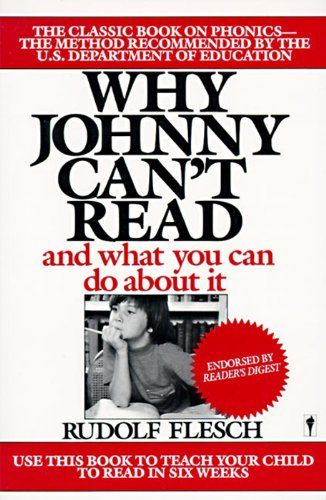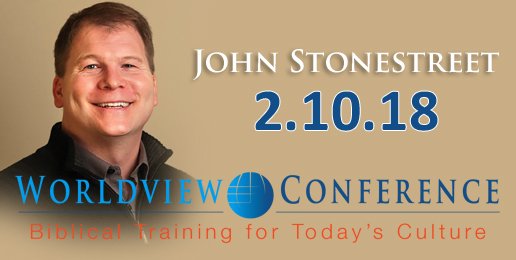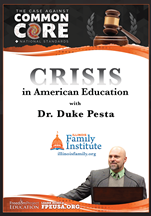Socialists Used Public Schools to Destroy Literacy in America
Widespread illiteracy and the ignorance it produces represent an existential threat to the United States today. But it wasn’t always this way.
And it can be fixed.
Fortunately, neither the cause of this crisis nor the solution to it is a mystery—at least to anyone who has studied the issue.
To blame for this dangerous phenomenon are socialist “educators” going back to the mid-1800s. In particular, it was their quack methodologies ostensibly aimed at “teaching reading” to children.
The answer to the illiteracy crisis is simple, though: America must go back to what worked for thousands of years and continues to work today: systematic phonics instruction.
Americans were almost certainly the most literate people on the planet in the 1700s and 1800s.
In fact, the earliest settlers in Massachusetts, the Puritans, were so passionate about reading that in the 1640s, they passed the “Old Deluder Satan Act” mandating that everyone learn to read. The thinking was that, without knowledge of the Bible, the devil would be more easily able to deceive their communities. And so, it was understood that every town must strive for universal literacy.
This passion for literacy translated into what would become the most literate society that mankind had ever produced up to that time.
According to University of Montana scholar Kenneth Lockridge’s study, “Literacy in Colonial New England,” 90 percent were literate by 1800, with numbers approaching 100 percent in cities such as Boston.
Even among women, that was true. According to estimates by Joel Perlmann of Bard College and Dennis Shirley of Boston College, virtually all women born in the early 1800s were literate.
At the time, Americans realized that as well. In his groundbreaking 1812 study “National Education in the United States of America,” Du Pont de Nemours estimated that even among young people, not more than “four in a thousand are unable to write legibly—even neatly.”
And in 1800, the Boston Review reported that no other nation in the world had a larger percentage of its population with at least basic literacy skills and an understanding of the “rudiments of science.”
Considering documents such as the Federalist Papers, which were addressed to the common American man, it’s also clear that the level of literacy by the late 1700s was extraordinary—especially by today’s standards.
Remarkably, this was all accomplished with virtually no government involvement in education at all. In fact, most children learned to read from their families using simple but highly effective resources such as Noah Webster’s “Blue Back Speller” and the “New England Primer.” These two tools taught reading using phonics while providing valuable moral lessons.
Literacy Crisis
By the middle of the 20th century, everything changed.
A crisis in literacy was brewing that’s without precedent in the history of the world. Literacy rates began plummeting, particularly after World War II. And today, the government’s own data shows evidence of a catastrophic decline in reading.
In 1993, the U.S. government conducted the most comprehensive literacy study ever performed up to that time. And the results were shocking.
On Sept. 9 of that year, citing the study, the Boston Globe reported that “nearly half of Americans read and write so poorly that it is difficult for them to hold a decent job.”
Many other analysts concluded, based on the findings, that almost half of the nation was either illiterate or at least very close to functional illiteracy. In short, the United States had been handicapped.
Another federal study performed a decade later found similar results.
The numbers are even worse in certain areas, and among America’s youth.
According to the federal government’s most recent National Assessment of Educational Progress, only about one-third of high school seniors are proficient in reading.
And in Washington, D.C., a recent State Education Agency report revealed that two-thirds of the adult population is functionally literate, falling to 50 percent in some wards. In response, top D.C. officials took a trip to communist Cuba to see how that murderous regime “educates” children.
Of course, there had been a sneak preview of what is now being observed in Boston under then-Massachusetts Secretary of Education Horace Mann—a collectivist Utopian who led the government takeover of schooling in his state and beyond—in the mid-1800s.
But the quackery there had been quickly and ably exposed by experienced and professional educators, limiting the damage.
Quackery Pushed by Collectivists
The root of the problem stems from the method used to teach reading. The writing system in English is based upon phonetic characters, with each letter representing one or more audible sounds. For instance, the letter “b” makes a “buh” sound, while a “p” makes a “puh” sound.
So, from the time this writing system was developed thousands of years ago by the Phoenicians, teaching an individual how to read has involved giving the student the knowledge to sound out letters, blend them together, and then decode words.
A great Christian minister and educator, Rev. Thomas Gallaudet of Connecticut, after learning from a French minister in Paris, pioneered a new system. It would come to be known variously as the “whole-word” method, the “look-say” method, or the “sight-word” method. It seems clear that Gallaudet had nothing but the best of intentions, even if his ideas ended up producing so many problems.
In his capacity as director of the American Asylum at Hartford for the Education of the Deaf and Dumb from 1817 to 1830, Gallaudet worked to refine methods to teach reading to children who were deaf and mute. Because deaf children are incapable of hearing sounds, obviously, teaching them to associate certain sounds with certain symbols—letters in this case—wasn’t feasible.
So instead, he taught the children to look at whole words as ideographs or pictographs, similar to the Chinese writing system, as if the words themselves were the symbol, rather than a group of symbols each one representing a sound. Instead of teaching a child that the word “hat” includes three symbols, each one representing a specific sound, Gallaudet would show them the entire word, along with a drawing of a hat, encouraging children to memorize the whole word and its meaning.
For deaf children, this was an enormous leap forward. But Gallaudet and others theorized, incorrectly, that this same method might help non-deaf children. Gallaudet even created a reading primer based on these ideas, and began promoting his methods in educational circles and publications.
Just a few short months after being selected to serve as the commonwealth’s first Secretary of Education in 1837, Mann, a collectivist who seemed always ready to embrace quackery, would oversee the introduction of this new system into the government primary schools of Boston.
It was a disaster.
Basically, children suddenly struggled to learn how to read, with many of them displaying symptoms that today would be diagnosed as “dyslexia.”
Within a few years, the schoolmasters of Boston joined forces to expose and repudiate the quackery before it did more damage. In a stinging paper, more than 30 school chiefs wrote that “such a change, as that proposed by Mr. Mann and others, is neither called for, nor sustained by sound reasoning.”
The critical comments, made in the “Remarks on the Seventh Annual Report of the Hon. Horace Mann,” pointed out that many of the arguments made in support of the whole-word method were “fallacious” and “based upon false premises.” Others were irrelevant.
And the results were clear, too: “There has been a great deterioration during the trial of the new system.”
That was the end of that—at least for a while.
Resurrecting the Quackery
Incredibly, some 50 years after being exposed as harmful, the whole-word method would be resurrected by “education reformer” John Dewey, a hardcore socialist who is almost universally recognized as the founding father of America’s “progressive” public education system.
While Mann may have genuinely believed that the whole-word method would work, it appears very likely that Dewey suffered under no such delusions. For one, the method had been conclusively debunked in the 1840s under Mann. In addition, Dewey used the method on children in his “experimental” school in Chicago, with results similar to those obtained in Boston generations earlier: children unable to read properly.
Dewey also left smoking-gun evidence of his desire to intentionally destroy the high literacy rates among children that existed throughout America at that time. In his controversial 1898 essay “The Primacy Education Fetich [sic],” he openly argued that schools should de-emphasize the teaching of reading, which he believed led to individualism.
In fact, he said children in the early grades were better off not receiving much instruction at all in the so-called “3 Rs”; reading, writing, and arithmetic. Instead, Dewey, an ardent admirer of the Soviet Union, thought young children mostly needed to be properly socialized to become functional members of the collective.
He knew his ideas would not go over well with parents, teachers, or taxpayers of the era.
“Change must come gradually,” Dewey wrote in that essay. “To force it unduly would compromise its final success by favoring a violent reaction.”
So instead, he went to the Rockefeller dynasty and the elites.
Years later, Dewey disciples—a motley collection of socialists and racist eugenicists—would create “reading” primers based on the whole-word quackery. William Gray at the University of Chicago, where Dewey led the education faculty for years, would produce the “Dick and Jane” series. Meanwhile, Arthur Gates at Columbia University’s Teachers College, where Dewey went after Chicago, would produce the Macmillan Readers.
It took a while for them to catch on in America. But after World War II, with plenty of taxpayer cash to burn, school districts across the United States, many being influenced by Dewey and his minions, started buying up the books and imposing the whole-word method on millions of innocent students.
Literacy rates promptly collapsed.
 By the 1950s, the crisis was so serious that the public was starting to ask questions. And in 1955, Rudolf Flesch published the explosive book, “Why Johnny Can’t Read,” blowing the lid off the quackery.
By the 1950s, the crisis was so serious that the public was starting to ask questions. And in 1955, Rudolf Flesch published the explosive book, “Why Johnny Can’t Read,” blowing the lid off the quackery.
“The teaching of reading—all over the United States, in all the schools, in all the textbooks—is totally wrong and flies in the face of all logic and common sense,” he explained, lambasting the whole-word method and the literacy crisis it produced.
The ensuing scandal caused many schools to restore traditional phonics instruction. But the Utopian advocates of reading quackery did not go away.
Less than 20 years after Flesch exposed them, legendary educator and reading expert Dr. Samuel Blumenfeld would expose them again in “The New Illiterates.” In the book, he systematically analyzed the most common reading primers then in use across the United States, highlighting the problems and showing the enormous damage being done to children.
Again, scandal ensued. And again, quackery advocates rebranded their schemes as “whole language” and offered minor alterations, then went right on handicapping American children by the millions.
Incredibly, some especially unhinged “educators” argued that teaching children to read properly was all part of a vast “right-wing” conspiracy.
Now, brain scans performed with new technology have actually shown the damage being done to the physical brains of children victimized by the quackery. Dr. Stanislas Dehaene, director of the Cognitive Neuro-Imaging Unit at Saclay in France, demonstrated the harm and explained that reading must be taught by systematically teaching children the correspondence between sounds and letters.
The education establishment pretended not to notice. And the absurdity continues.
Today, key elements of the “whole-word” method still haunt public schools across the United States, often under new terminology such as “balanced literacy” and “guided reading.” Under the national “Common Core” education standards imposed on the United States by former President Barack Obama, kindergarten children are even required to memorize “sight words.” This causes a whole-word reflex to develop that can produce lifelong reading disabilities, despite having a bit of phonics mixed in.
Perhaps more incredibly, even though the methods have been totally discredited since the 1840s, the United Nations Educational, Scientific, and Cultural Organization (UNESCO) claims children all over the world should still learn a “sight vocabulary.”
Consider: People who can’t read can’t readily educate themselves. They are much easier to control and manipulate, too. And perhaps that is the point.
With Mann, it’s entirely possible that this was all an innocent mistake. Certainly, that’s true of most teachers in the United States today as well who haven’t been trained to teach reading properly.
But the fact that this giant “mistake” continues to be supported by the education establishment to this day—and that it always seems to be socialists, communists, and collectivists pushing it—suggests that there is a much more nefarious agenda at work.
This article was originally published by The Epoch Times, and is one report in a series of articles examining the origins of government education in the United States.
 The decline in a Christian-based worldview is illustrated in the graphic posted to the right.
The decline in a Christian-based worldview is illustrated in the graphic posted to the right.


 IFI video recorded an event we had earlier this year with Dr. Duke Pesta, a nationally renown expert on the dangers of Common Core. This DVD is available with any donation of $20 or more.
IFI video recorded an event we had earlier this year with Dr. Duke Pesta, a nationally renown expert on the dangers of Common Core. This DVD is available with any donation of $20 or more.